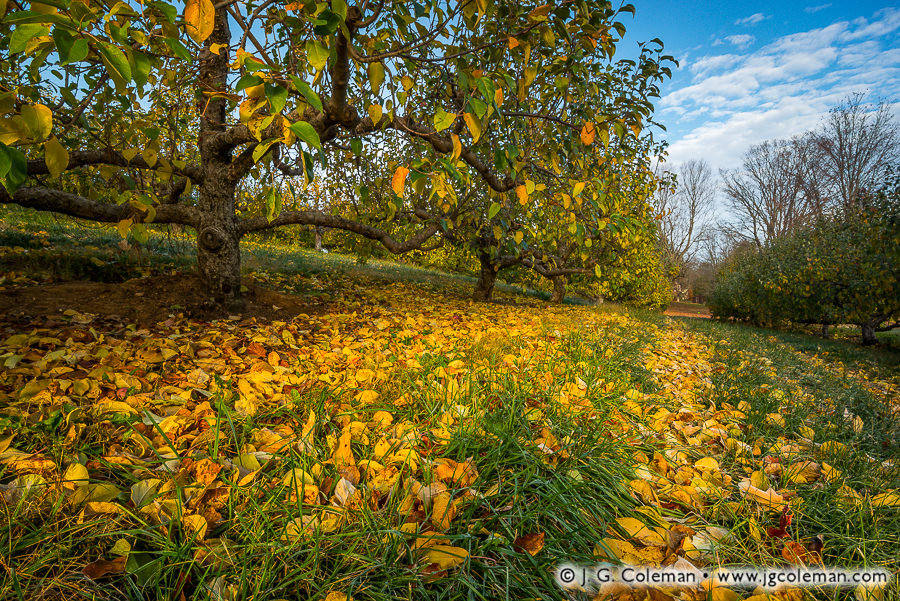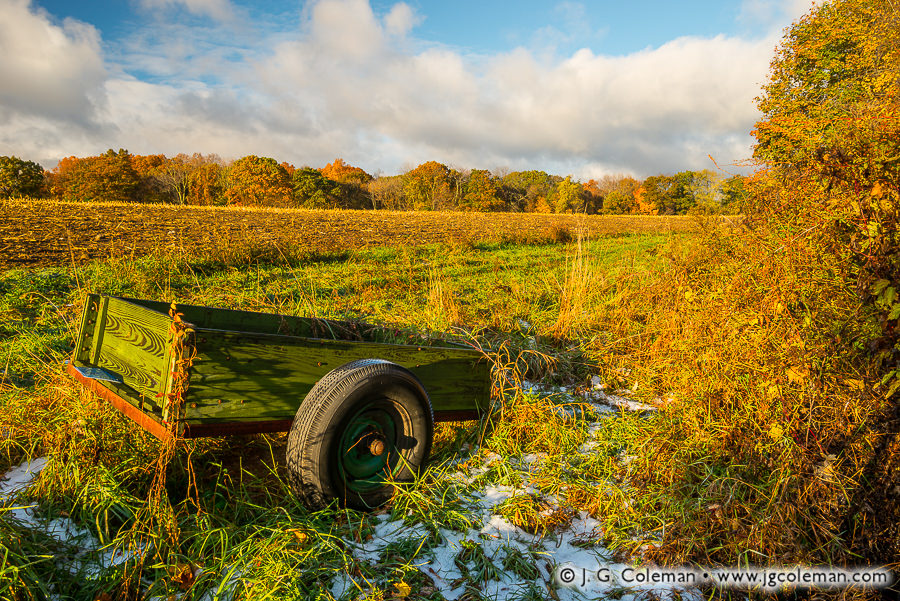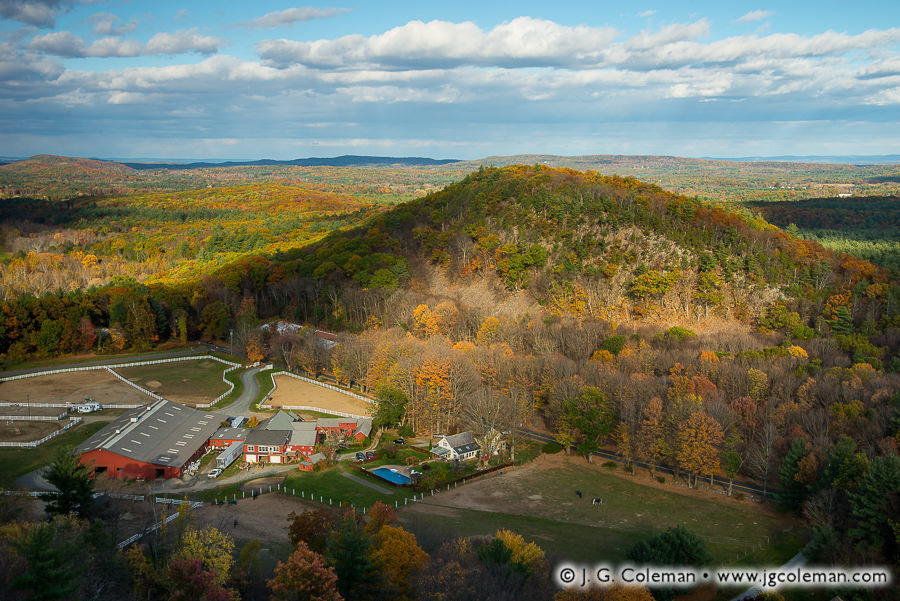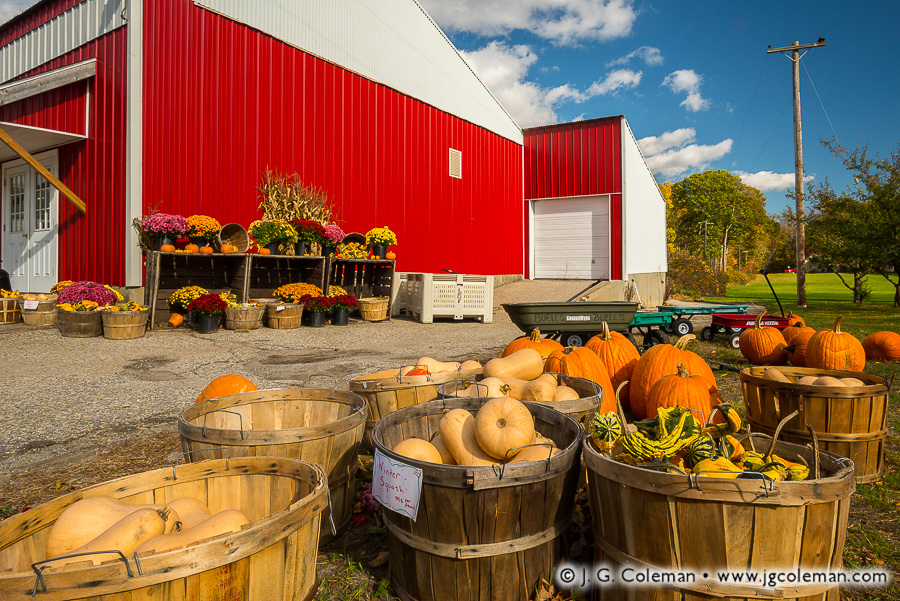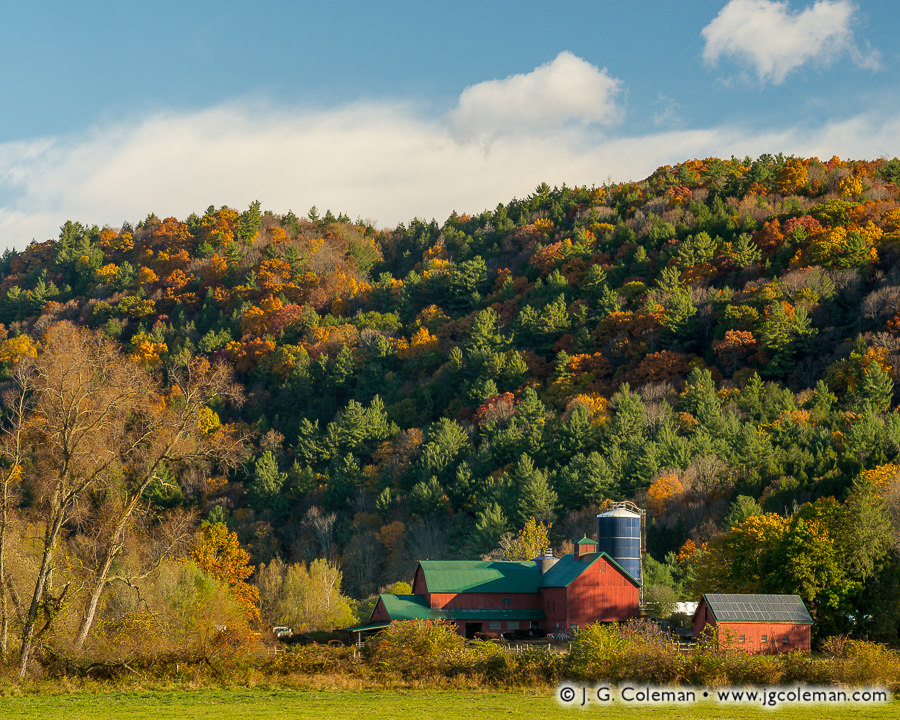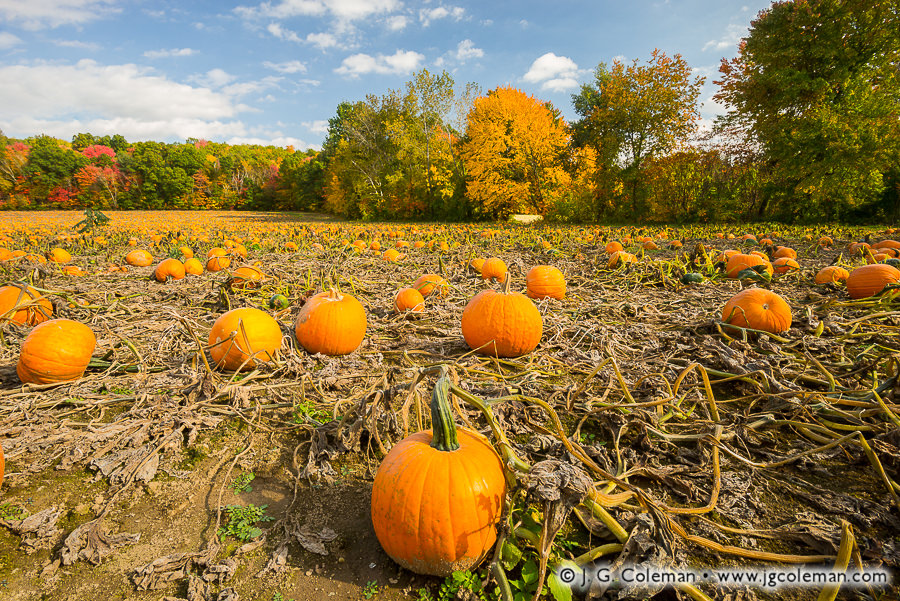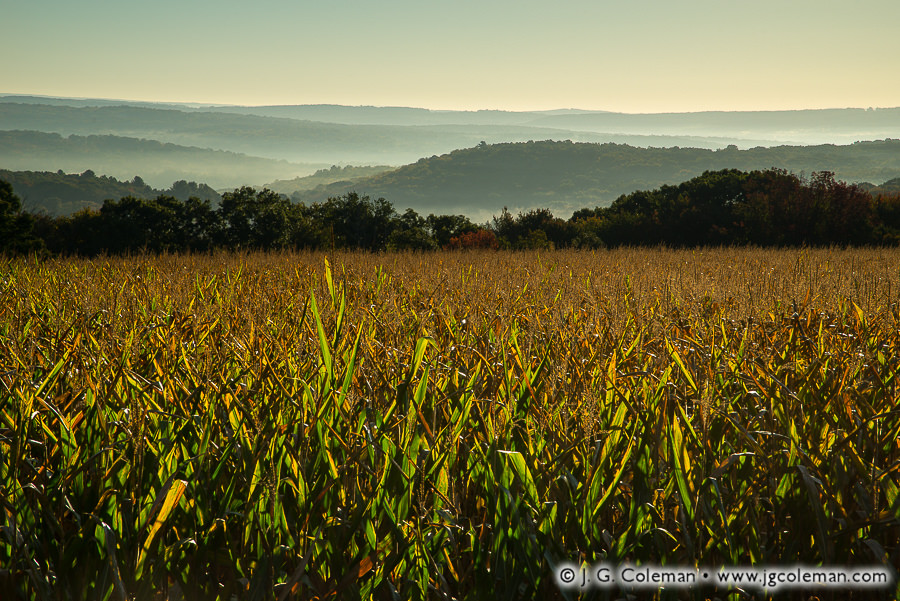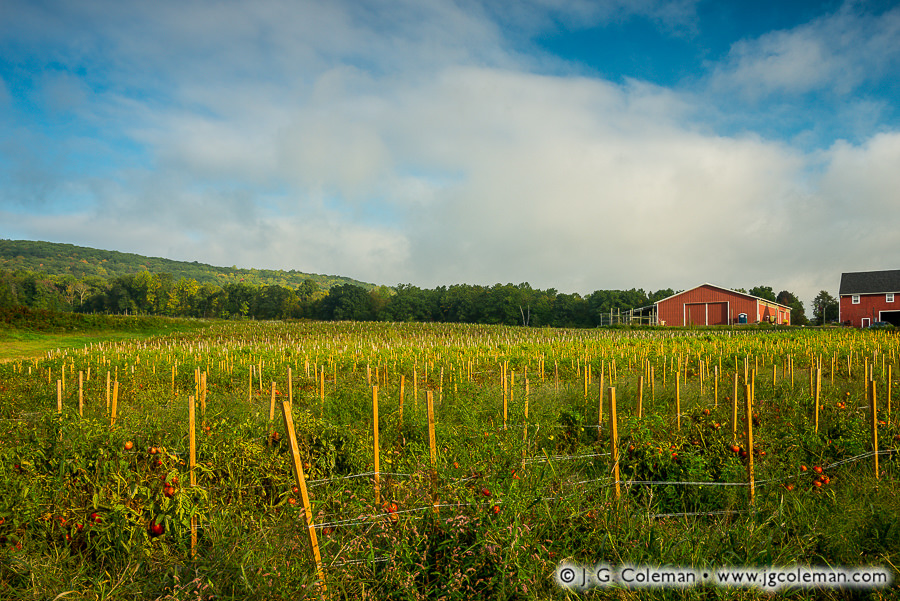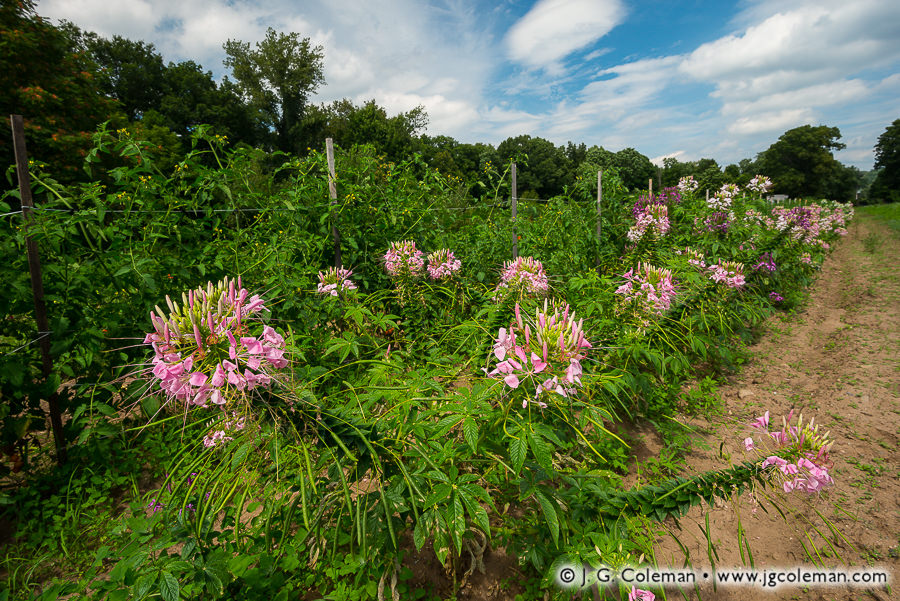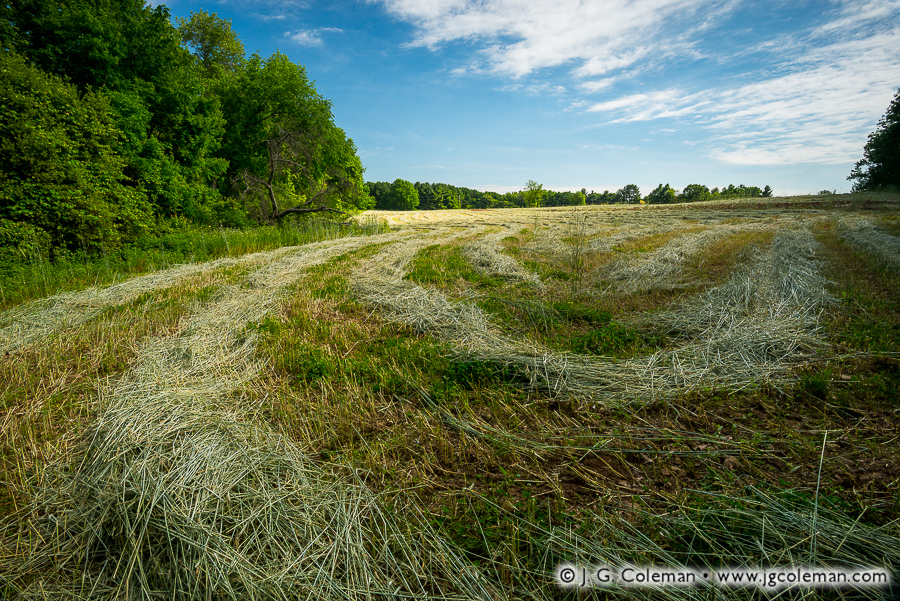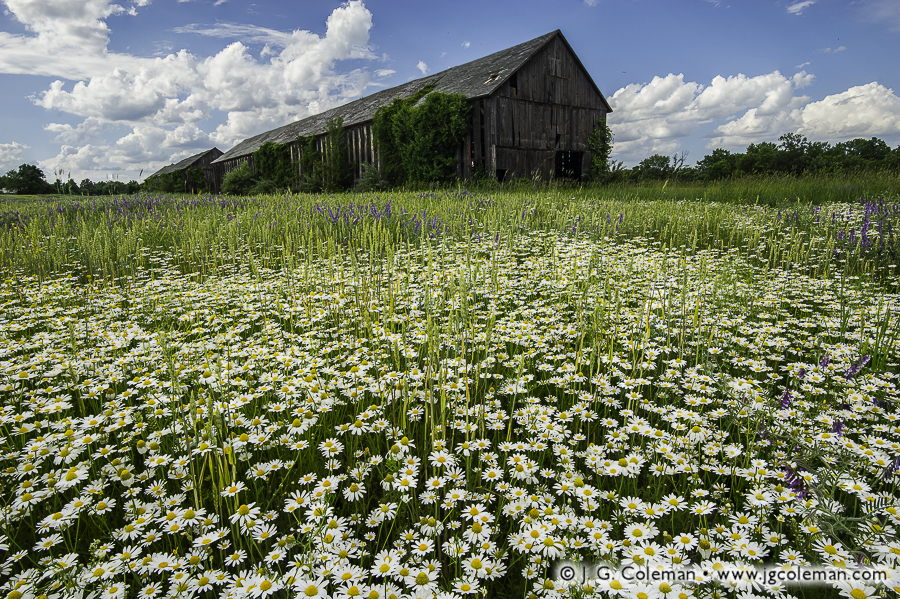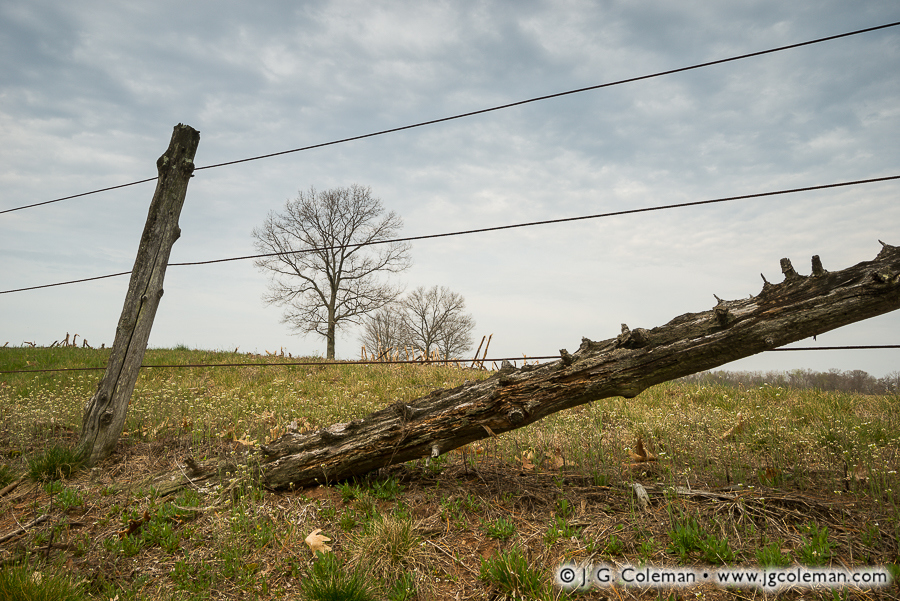
Peach orchard during autumn, Guilford, Connecticut
© 2016 J. G. Coleman
Well into November, and with the surrounding forests already stripped bare by icy winds, an orchard of wizened peach trees clings valorously to its autumn trimmings. A mosaic of fallen leaves scattered upon the grasses beneath, however, signals the inescapable reality of the coming winter.
For those who understandably associate peaches with the forgiving climate of the American South, it might seem almost bizarre to find orchards of the fruit tree dotting the New England landscape from Connecticut to Maine. Indeed, peach trees weren’t well-suited to cold weather in the beginning, often being found in the Northeast only in small plantings or backyards, more as novelties than serious fixtures in the orchard.
It wasn’t until the late 1800s that New Englanders began seeking out resilient specimens and isolating genetic flukes to produce new cold-hardy varieties that would prove commercially viable in their neck of the woods. The trees still aren’t as resilient as the venerable apple and pear –crops are occasionally decimated across the region by brutal cold snaps– but the peach has nonetheless found a permanent and welcome home in orchards of New England.
Purchase a Fine Art Print or Inquire About Licensing
Click here to visit my landing page for “Yankee Farmlands № 95” to buy a beautiful fine art print or inquire about licensing this image.
Want to See More?
Be sure to check out all of the work from my Yankee Farmlands project.

